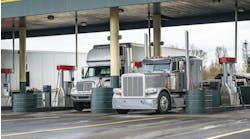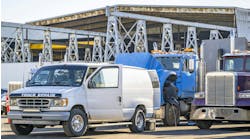I am sure there are many things fleets would like to eliminate—high fuel prices, taxes, certain regulations, the driver shortage, the cost of diagnostic equipment. I am also confident that eliminating, or at least reducing, downtime would be fairly high on their list. Downtime has hard dollar costs, but it also causes frustration for drivers and can damage a company’s reputation with its customers.
I have been in the trucking industry long enough to know that it is not possible to eliminate all downtime. There probably will always be that nail that gets into a tire or an accident caused by a driver that cut in too close to a truck. However, I believe it is possible to reduce the number of roadside breakdowns by taking a few simple steps.
1. Refocus drivers’ efforts
We all know that drivers are the first line of defense when it comes to preventing on-road breakdowns. Make sure they understand just how important they are in the process of keeping your trucks on the road.
See also: Scheduled maintenance more important than ever
While pre- and post-trip inspections are mandated, they are completed with varying levels of thoroughness. It is not a bad idea to periodically review the proper way to perform a pre- or post-trip inspection. Even if it seems like fairly basic stuff, getting the basics right is the foundation for keeping trucks operating properly.
2. Engage technicians
Make sure your technicians know the value you place on Driver Vehicle Inspection Reports (DVIRs).
They need to take seriously anything drivers note on their DVIRs. And once the vehicle is in the shop, it should be company policy that it gets a complete inspection to look for any impending signs of failure. Re-emphasize the need for technicians to find the root cause of a problem in order to prevent it from recurring.
3. Collect and analyze data from all service events
You need to have a system that captures data from every service event, whether that service is performed in your shop or by an outside service provider.
The data from these service events needs to be looked at on an asset-by-asset basis to ensure you are aware of the health of each individual asset. But data also needs to be analyzed across asset classes—vehicles of the same age, vehicles from the same manufacturer, vehicles operating in the same duty cycle. This will allow you to spot wear and failure trends which you can then proactively address.
4. Review vehicle specs
Normally, I would start my list with the importance of a spec review when ordering new trucks. Recent supply chain shortages have resulted in fleets feeling glad to even get trucks, let alone to get trucks that meet their exact specifications.
I am confident that the industry will get back to normal production levels and once it does, fleet managers need to be diligent about reviewing specs each and every time they order trucks. I suggest they speak to the service manager to get their input on things like component durability and serviceability.
In a perfect world, there would be no roadside breakdowns. I am not sure how to make it perfect, but the four steps above can help get us closer to perfect.
Jane Clark is vice president of member services for NationaLease. In this position, she is focused on managing the member services operation as well as working to strengthen member relationships, reduce member costs, and improve collaboration within the NationaLease supporting groups. Prior to joining NationaLease, Clark served as area vice president for Randstad, one of the nation’s largest recruitment agencies, and before that, she served in management posts with QPS Cos., Pro Staff, and Manpower Inc.



